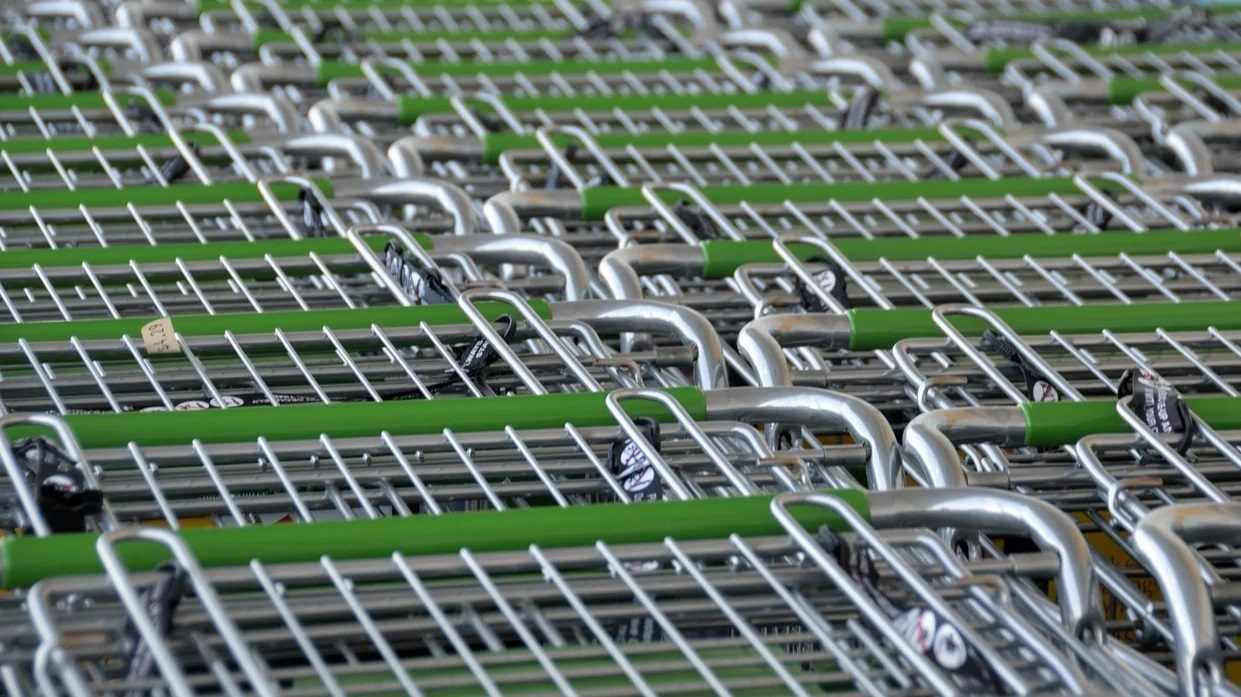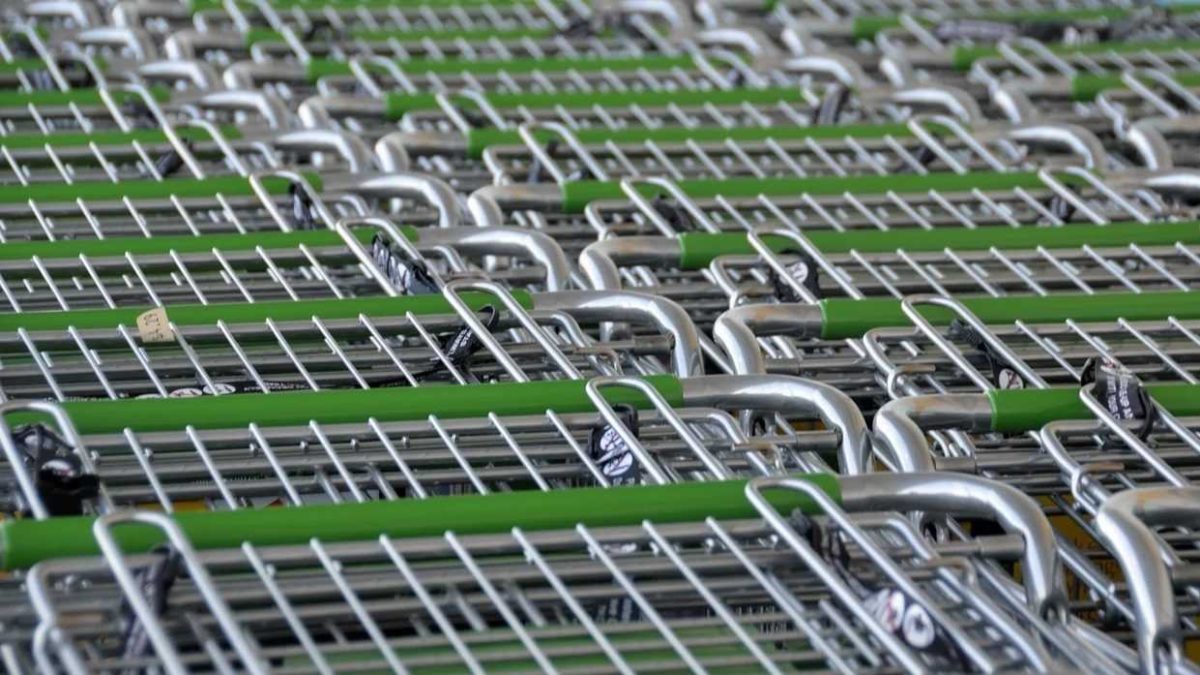Loyalty programmes in grocery retail
The grocery retail category is one of the most saturated in terms of the number of organised loyalty programmes aimed at end buyers. The following analysis has been prepared using the example of the Polish market, where as many as 12 chains are running long-term ventures aimed at binding end buyers by rewarding them for repeat purchases.
The following issues are discussed here:
- Which chains run a loyalty programme?
- What is the nature of loyalty programmes organised in grocery retail?
- Do the programmes work offline as well as when shopping online?
- Can loyalty programme points be used to pay for purchases?
- What are the incentivisation rates for programmes in grocery retail?
- Which loyalty programmes are based on a mobile app?

The analysis took into account the loyalty programmes of the above retail chains.
The key role of the mobile application
With the exception of one case, all the food retail chains’ loyalty programmes are run through a mobile app. According to the Google Play statistics, the threshold of app downloads of more than 0.5 million users has been exceeded by programmes implemented by Lidl, Żabka, Biedronka, Carrefour and Tesco.
In the vast majority of cases, registration for the programme itself is done via the mobile app. They also serve as a virtual programme card, providing access to the point balance and the participant’s account, and allowing geolocation for the purpose of offering dedicated promotions. In some cases, such in the Auchan Skarbonka programme, they also provide information on purchase history, although this is usually only for the last 10 transactions, or access to transactions documenting online purchases only (e.g. in the My Carrefour programme).
For most loyalty programmes, access to the programme functionality is not even offered via the website.
The nature of loyalty programmes
Most grocery programmes by retail chains, such as Moja Biedronka, involve a mixed points and discount character. This means that points are collected for purchases which can be redeemed for discounts. In most cases, the very fact of participating in the programme provides access to discounts.
Three programmes are strictly points-based (Żabka – Żappka, E.Leclerc – Karta Stałego Klienta, Hitpol – Good Customer Programme), two are discount programmes (Lidl – Lidl Plus, Polomarket – POLOkarta), while one (Auchan – Auchan Skarbonka) is implemented under the money-back model. Keep in mind that I am following a set of core principles within which I do not consider the impact of organising periodic price reductions on the overall nature of the programme.
Such a distribution is in line with the general trend in the Polish market for loyalty programmes, which is dominated by points-based programmes, discounts, and those of a mixed nature, taking into account the reward criteria.
Incentivisation rates
The value of the incentivisation factor is the quotient of the market price of the prize offered to the participant and the value of the money the participant has to spend to be entitled to claim the prize. For example, if a participant has to spend PLN 100 gross (i.e., including VAT) to receive a prize worth PLN 1 gross, the incentivisation factor will be (PLN 1/100) x 100% = 1%. In the case of rebate programmes, instead of the price of the reward in the numerator, we include the value of the rebate or money-back awarded in nominal terms.
A discussion of the details related to its calculation methods was the subject of a separate text, available at this link.
The average incentivisation rate in this market segment is slightly above 1 percentage point. The highest incentivisation rates are offered by E.Leclerc, Żabka and Hitpol in their programmes, while Carrefour and Tesco have the lowest. As for discount programmes, the highest levels of discounts, often exceeding 30%, are offered by Biedronka and Polomarket, with the lowest offered by Piotr i Paweł and Auchan.

Validity period for points and discount offers
While the loyalty programmes of the individual chains can be compared to each other on most parameters, the question of the validity period of points is framed so differently in the terms and conditions by the organisers that it is difficult to reduce the issue to a common denominator. What do I mean? Let us illustrate it with a few examples.
In the Żappka programme, points are valid for 3 months (those accrued by the end of October in a calendar year should be used no later than the end of that calendar year) if no new purchase is made within 3 months from the date of the last purchase, during which the participant’s ID is scanned. The participant’s account will also be deactivated if they do not perform any activity in the programme for a period exceeding 12 months.
In the Topaz programme, the points validity period is set at 18 months; however, if no transactions are performed with the TOP Card within a period of 12 months, it will be closed. In contrast, the period is set at 24 months for the Tesco Clubcard programme, and at 6 months for the POLOkarta programme. As for the validity of discount offers, each has a specific validity period.
Which programme stands out in the market?
Without a doubt, the most innovative programme is Lidl Plus, launched in April 2019, due to its contactless payment functionality, Lidl Pay. This, in particular, is proving to be an important differentiator in the times of the pandemic, where its lack of contact with banknotes or the need to enter a PIN at the terminal is a significant advantage. Another differentiator is e-paragraphs, which are virtual versions of the receipts for purchases made using the mobile app, which are stored in the app on the participant’s individual account.

Screenshots of the outstanding Lidl Plus application
Also worth noting is the diversity of the My Carrefour programme, in particular the fact that the programme works when shopping online, and the fact that Carrefour runs the Family Card and Senior Card programmes in parallel.
Another interesting feature of the Carrefour programme is the functionality known as Scan&Go. To use it, the customer needs a smartphone with the latest version of the ‘My Carrefour’ application installed. After scanning the barcodes of the products with the phone’s camera, the scanned products are automatically added to a virtual basket and the value of the purchases is added up. Once all the products have been scanned, you have to approach the checkout and pay for your purchases, either by cash, card or mobile using the Masterpass e-wallet. In this case, a code must be presented at the checkout, which is generated by the app when the user clicks the ‘Finish shopping’ button.

Another noteworthy feature of the My Carrefour programme is the progressive nature of the accrual of points, where the purchases on a receipt with a value between 1 grosz and 9.99 zloty are rewarded with 1 point, while each additional 10 zloty spent results in the accrual of 3 points.
Beyond this, each of the programmes has developments that are worth noting, all representing an advantage:
- Auchan Moneybox;
- Tesco Clubcard – the loyalty programme works while shopping online;
- E.Leclerc Loyalty Cards – a high incentivisation rate of over 1.5% (up to 3 times higher than competing programmes);
- POLOcards from the Polomarket chain – high level of discounts offered to participants for special offers, often exceeding 30%.

Feel free to contact us.
We know all about loyalty programmes.
![]() Tomasz.Makaruk@i360.com.pl
Tomasz.Makaruk@i360.com.pl
![]() 22 331.09.97
22 331.09.97
Post Scriptum
Loyalty programmes in the grocery segment are currently very popular. Not surprisingly, there are many benefits to be gained by being a member of the programme. A year has passed since the last article, so it is worth taking another look at the available loyalty programmes. Our readers are probably just as curious as the author.
Mobile applications – what’s waiting for us
All loyalty programmes today are run in the form of applications for mobile devices (with one infamous exception). We can see that most applications not only have a modern design but are also easy to use. They are no longer archaic and complicated electronic creations.
The Lidl Plus and My Carrefour apps are firm favourites. They are the most transparent and easy to use, even for the most reluctant users. The apps have highlighted tabs that are signed, so we can easily find whatever interests us. We can find coupons in them specially personalised for us, current promotional brochures, and the membership card.
The Lidl Plus app also has an e-paragon tab, and it was a pioneer in this category – but one competitor has recently caught up with them: My Carrefour. As users, we do not have to activate any functions separately, as the e-paragon option is available in the app. To use this new option, we need to show the cashier the barcode generated by the app. Our e-paragon then appears in the app, but it is not fiscal in nature, which is equivalent to the cashier having to print a traditional receipt.
Lidl was the first to introduce contactless payment – to use it, you just need to add your payment card in the app. This is a great convenience as we do not have to worry about not having a wallet when shopping – all we need is our phone.
The My Carrefour loyalty programme is not resting on its laurels, and continues to catch up with its main competitor. Recently, this popular discount store also introduced contactless payment options, where we need to activate the mobile payment option in the app. All this takes is a visit to the ‘Mobile payments’ tab, enter our own authorisation code and then enter our payment card number and… it’s done! We can enjoy modern payment using a smartphone.
New promotional campaigns – how can you attract consumers?
In terms of the nature of the programmes, not much has changed. The majority of loyalty programmes are still points and discount schemes.
The Lidl Plus programme has mainly a discount nature, but in addition to traditional discount coupons and periodic product discounts, the shop also introduces various actions to add variety to their proprietary programme. One of the most recent actions is ‘Week plus’, a bar with three amounts (PLN 69, PLN 129, and PLN 199) and a gift icon that appears in the app. When shopping for a certain amount, we receive a given benefit, so when we are shopping for PLN 69, we receive a discount voucher of PLN 5 to use on the next shopping trip with a minimum value of PLN 100. Such campaigns are sure to encourage some consumers to shop for a higher amount to get the discount they are interested in. For Lidl, it is a way to increase the value of the shopping basket.
My Biedronka has also recently introduced some new features to freshen up their programme. In addition to cyclical reductions in the range and the collection of points, customers can also gain shopping vouchers. How does this work? When purchasing selected products, we are given a certain percentage of the amount spent as a voucher to use on our next shopping trip at this discount store. Of course, there are daily limits on the number of products purchased per My Biedronka card, and the vouchers also have a set maximum value. Such campaigns definitely encourage potential consumers, but the downside is the expiry date of the vouchers – usually within three days.
Auchan’s loyalty programme is popular for purchases with a money-back option. New rules are presented for the action each week. One of these is the opportunity to shop for groceries with a percentage of the amount we spend refunded to our My Moneybox card. However, the offers are usually only valid on one specific day. Another option is to purchase selected products for which we may receive up to 20% of the amount spent on the shop’s card. This is a very good solution that is sure to encourage new customers and satisfy regular ones.
The new Żabka shop – a journey into the future
In June, Żabka opened the first unmanned grocery store on the grounds of the Poznan International Fair. Żappka Store – the shop of the future, is fully unmanned, and all you need to do your shopping there is your smartphone! Cash or a payment card are completely unnecessary.
How does it work?
To use the innovative solution, we need to take a smartphone with the Żappka app installed and a card set up in Żappka Pay. To enter the shop, we have to scan a one-time QR code generated in the app at the reader. This way, the generated code will link our purchases to the funds available on the payment card. Of course, it is possible to enter the shop with our friends or family, but the bill will be added to the account of the person who generated the QR code. However, only one person is currently allowed in the shop for epidemiological reasons.
The most surprising thing is the way we make purchases. When shopping, we do not have to scan or add anything in the app. All we have to do is pick up the products we want and just… walk out of the shop. Amazing isn’t it! But how is this possible? The shop has an intelligent camera system that monitors every step we take. It also recognises the products and their positioning on the shelves. If we take a product we want off the shelf and do not put it back, it is added to our bill.
When we leave the shop, the shop app will display the details of our transaction and we will receive a PDF invoice in our email inbox. Of course, the corresponding amount for the purchases made will be charged to the card we have assigned in the Żappka app.
If the innovative idea is successful, the discount store is planning to open a Żappka Store in Warsaw in the near future.
It might seem that in the 21st century, nothing can surprise us anymore, but Żabka has definitely succeeded. The biggest advantage of the innovative idea is the possibility to shop 7 days a week, 24 hours a day! Thanks to the unmanned nature of the shop, the ban on trading on Sundays does not apply. Żabka is sure to increase its customer base with this. I, myself, am curious about this solution, and I am eagerly awaiting the opening of a shop in Warsaw so I can take advantage of this technological miracle.
But it’s been done before… and it’s not coming back
The phrase aptly refers to the not-so-successful history of the popular Tesco Clubcard programme. Until a few years ago, it was one of the top programmes, crushing its competitors in the process. As you know, although one of the most outstanding programmes it has recently ceased operations in Poland. It seems that the lack of new and surprising solutions being added to the programme structures definitely contributed to this. If you would like to find out more about this, I encourage you to read the following article https://www.marketingbusinessblog.pl/adios-tesco-clubcard/.
Summary
As we can see, there has been a lot going on in the past year amongst the food segment loyalty programmes. Some programmes were at the top, while others fell into a deep abyss from which they could never climb out again.
The clear leaders among their competitors are two programmes – Lidl Plus and My Carrefour. Both companies offer graphically and functionally attractive mobile applications. The programme policy of these two competitors is similar – they have the character of a discount offer. Another important aspect is the possibility of contactless payment, which we can use in both the Lidl Plus and My Carrefour apps. However, Carrefour’s programme has an advantage with the available ‘Scan&Go’ option in their proprietary app.
11

